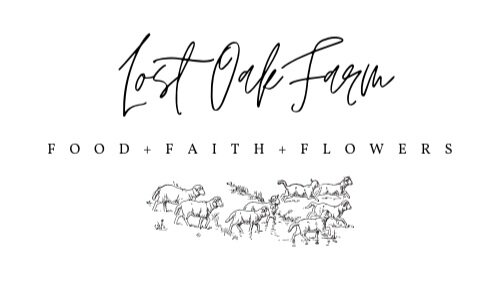Pasture Lambing
It’s that time of year again. Mamas are moving slow. Bags are filling up. And lambs are hitting the ground!
Many shepherds would have their flocks in barns and would be watching for signs of labor on cameras. Each ewe would lamb in a large group pen, then be moved into a small “jug” to bond with their lamb(s). The shepherd would be on stand by, ready to intervene and pull a lamb whenever labor stalls.
Our lambing methods, on the other hand, are a little more low-key. Our ewes lamb entirely on pasture, meaning lambs are born outside, in the grass, and generally without us around.
Truth be told, that’s really our only option. While we do have a couple of run-in sheds for shelter, we don’t have a barn capable of supporting all of our pregnant ewes. But even when we do have that barn (it’s coming along slowly but surely), we plan to continue lambing in the way that feels most natural and satisfying to us.
Let me lay out our 100% pasture lambing system for you!
Having now experienced labor and delivery myself, I realize that I extend my own preferences to the sheep. In order to reduce stress and create a calm environment, we try to give a laboring ewe plenty of space and monitor her from a distance. Similarly, I remember that it was a comfort that my own labor and delivery nurse was watching my levels/charts at the nurses’ station but wasn’t breathing down my neck.
We’ve found that, also like humans, sheep grow to fit what they’re accustomed to. Many farmers who jump at the chance to intervene and pull a lamb raise sheep who expect and need that intervention. Conversely, we only involve ourselves in delivery if it is absolutely necessary. Thusly, we have only ever had to pull lambs on our farm TWICE. We are so thankful and proud to raise easy lambers.
* Knock on wood, Lord. Knock on wood. *
Once the lambs are here, we only jug if the ewe is visibly rejecting the lamb. We’ll then take the necessary measures to encourage nursing. Generally, however, space and time is enough to establish that initial bond (to keep the human analogy going, we’d call this their kangaroo care).
We wait until everyone’s settled to determine gender and tag new lambs.
Just like barn lambing isn’t an option for us, pasture lambing isn’t possible for all operations. That is, not all breeds of sheep thrive on a pasture lambing system.
Knowing our limitations in terms of facilities, we chose to invest in a breed that we knew would be successful laboring in a natural environment.
Katahdins are tough. Their hardiness allows them to withstand the temperamental Kentucky weather and power through labor. Even yearling ewes display necessary mothering instincts (i.e. immediately cleaning lambs, encouraging nursing, being protective), which grants us the confidence to give them freedom in the field. And, finally, their track record of easy delivery prevents the need to have them penned up in anticipation of intervention.
In contrast, some breeds of sheep more consistently require assistance. This is completely reasonable! It is not, however, a quality we were equipped to support, and we had to recognize that when entering into the business
Obviously, all management practices have their downsides.
Pasture lambing increases predator risks, is more heavily impacted by unpredictable weather, and doesn’t allow for super close monitoring.
In order to combat those challenges, we do offer run-in sheds, as well as tree coverage, for both shelter from the weather and protection from threats. Our Livestock Guardian Dog is also officially on duty now that our vulnerable population is back (let’s pray he behaves).
I have no doubt that the magic of witnessing new life come into this world isn’t diminished or altered by location. I’m sure the same pre-lambing excitement bubbles up inside every shepherd, whether they’re building jug pens or clipping pasture. We’re all doing the good.
But I sure am thankful for our girls who allow us to live this life even without the admirable barn or handy equipment or new technology. Just like with human babies, you can buy all the gadgets and accessories, but it’s the basics that are going to get you through.
We so enjoy watching our girls thrive on grass and sunshine.





